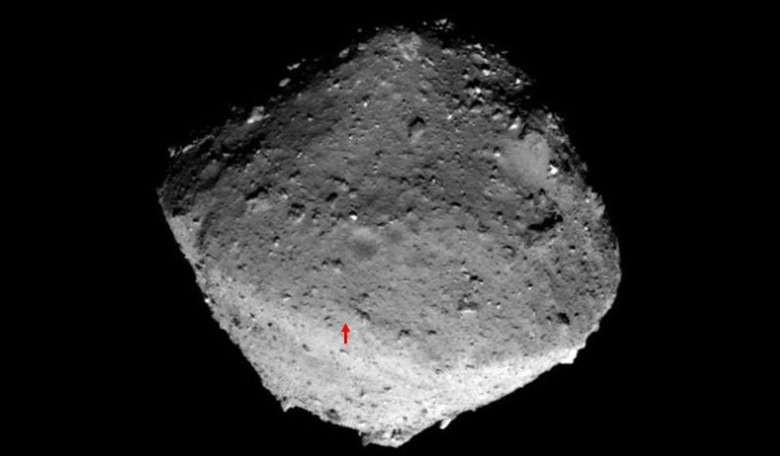Hayabusa2, Japan’s audacious asteroid sample-return spacecraft, is getting ready to collect a chunk of ancient asteroid by steadily descending from its “home position” of 20 kilometres above Ryugu as it heads towards the rocky surface at a steady 90 centimetres per second (cm/s).
JAXA signalled the probe and gave it the go ahead to begin the touchdown operation at 12.36 JST (03.36 GMT). As of two hours ago, the craft was around nine kilometres from Ryugu and it busily started sending back a flurry of pictures as the diamond-shaped, primitive carbon space rock came into closer view.
Hayabusa2 will home in on a pre-selected patch of the rock via a small, reflective, beanbag-like "target marker" that it dropped onto Ryugu earlier.
Once in position, the spacecraft will fire a 5g metal tantalum pellet at 350 metres per second into the asteroid’s surface and attempt an off-world heist by grabbing dust and grains dislodged in the blast.
As Ryugu is less than a kilometre across, it will have very little gravitational pull to hold onto any particles kicked up by the impact and so any floating debris should be caught by the onboard sampler horn.
Hayabusa2 will hold onto any samples it manages to collect and return them to Earth in 2020 for further study. After the Rosetta mission threw up a few surprises with the type of water it was mainly composed of (it had to much heavy water – deuterium – to be a match for our planet’s water), doubt has now been cast on where Earth got its oceans from.
Scientists are therefore hoping that this c-type time capsule that has remained relatively untouched since the formation of the Solar System can help quantify whether asteroids and not comets were the water-delivery vehicles billions of years ago.
"We believe carbon-rich (C-type) asteroids may have significant amounts of water locked up in their rocks,” says Prof Alan Fitzsimmons, from Queen's University Belfast, in an interview with the BBC.
“It's possible such asteroids may have brought to Earth both the water and the organic material necessary for life to start. These samples will be crucial in investigating this possibility."
The latest updates at 19:10 JST (10.10am GMT) have confirmed that the spacecraft’s speed has slowed to 10 cm/s and its altitude is about 5,000 metres from its target. From here, say the Japanese Space Agency, we are in a slow approach to Ryugu.











